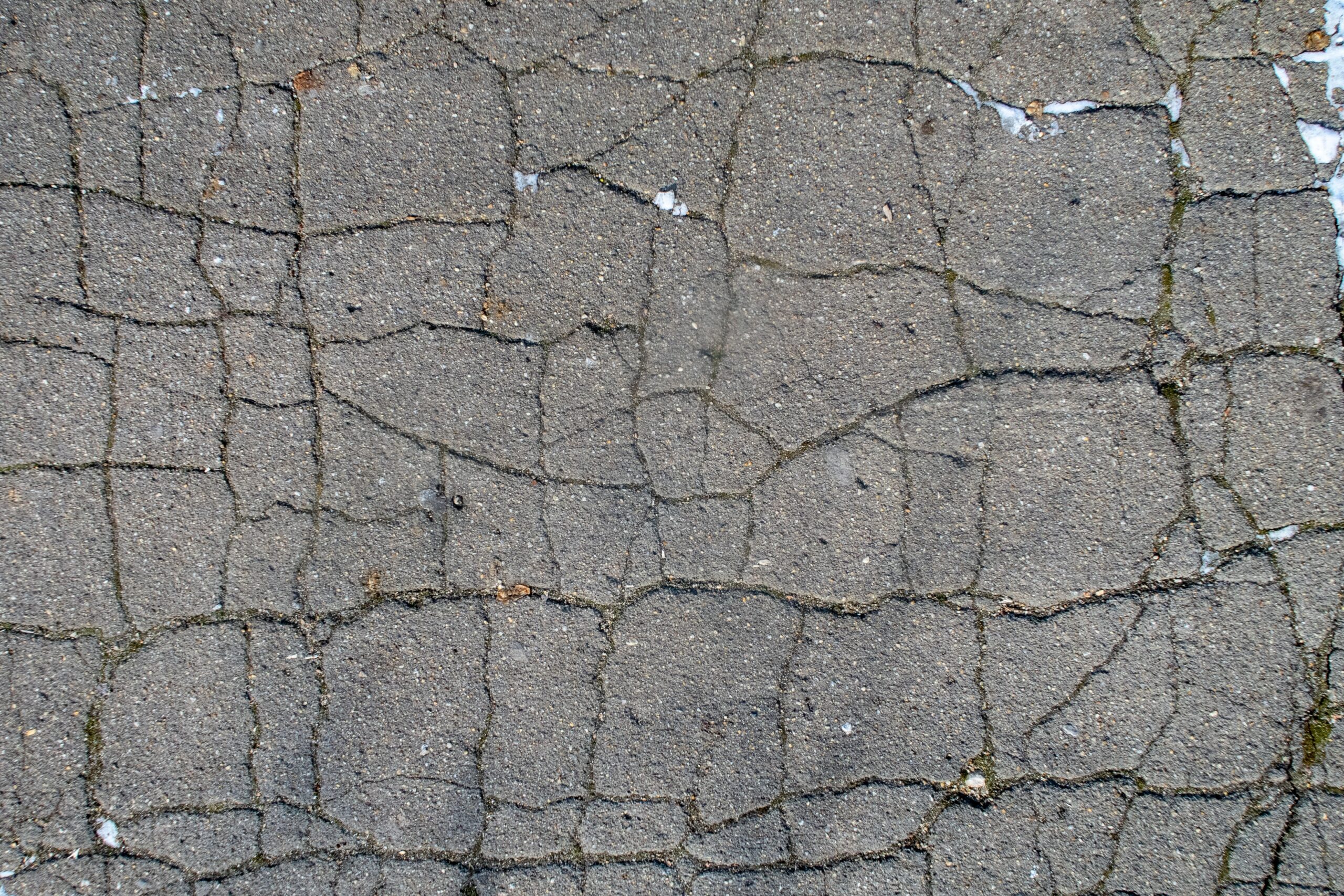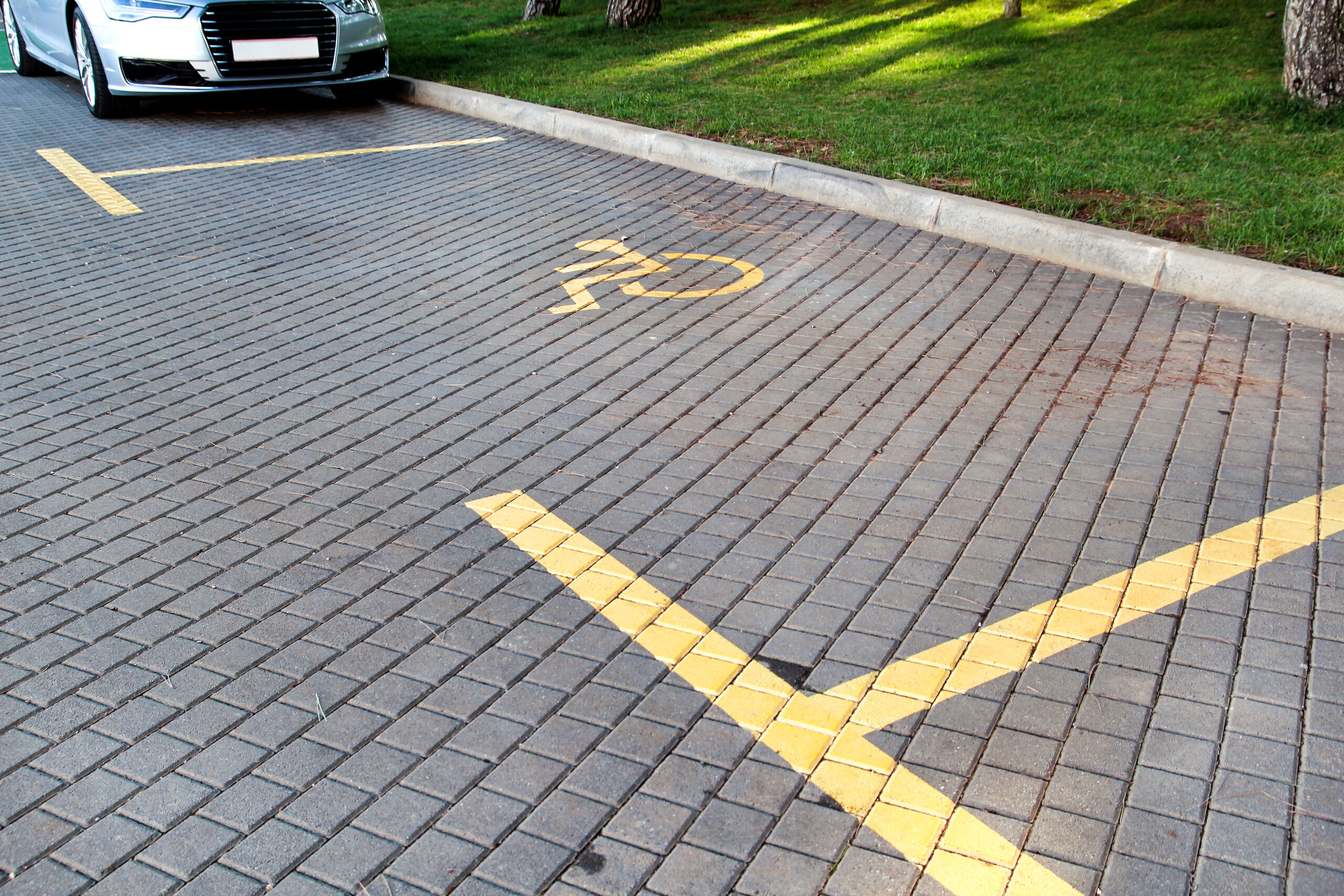
Small cracks in concrete frustrate many homeowners, property managers, and facility owners. Left untreated, these minor cracks widen over time, weaken the slab, let in water, and lead to costly repairs or full slab replacement.
To fix the concrete crack, clean the crack, apply the right filler, smooth the surface, allow it to cure, and optionally seal it for lasting protection. With the right tools, materials, and approach, you can easily fix small concrete cracks and prevent major deterioration.
Let’s explain why cracks form, what materials to use, and sidewalk crack fixes step by step, so you can restore both strength and appearance.
Why Do Small Cracks Form in Concrete?
Concrete cracks for several common reasons, even when the original pour was done correctly.
- Shrinkage happens as concrete cures and loses excess moisture, often creating hairline cracks on the surface.
- Temperature changes cause expansion in heat and contraction in cold, putting stress on rigid concrete.
- Heavy loads like cars, trucks, or machinery apply pressure that can exceed the slab’s tensile strength.
- Poor subbase or drainage allows uneven settlement or water erosion under the slab.
- Improper mix design or finishing can leave the concrete more brittle and prone to cracking.
It’s important to understand that cracks smaller than 1/4 inch wide are usually non-structural but still need prompt attention. Ignoring them allows water to seep in, freeze, expand, and worsen the damage.
Tools and Materials You Need
Having the right tools and materials ensures a clean, long-lasting repair.
Recommended tools:
- A wire brush or a stiff-bristle brush for cleaning
- A chisel and hammer for preparing the crack edges
- A shop vacuum or an air compressor to clear debris
- Caulking gun for flexible sealants
- Trowel or putty knife for applying patching compound
- Concrete mixer paddle (for larger patching jobs)
- Sponge or rag for finishing touches
Recommended materials:
- Concrete crack filler or patching compound
- Latex or epoxy-based concrete repair caulk
- Concrete bonding adhesive (if required)
- Concrete sealer or water repellent (for added protection)
Selecting the right material depends on crack width, location (horizontal or vertical surface), and environmental exposure.
Step-by-Step Process to Fix Small Concrete Cracks
Below are the step-by-step guidelines to fix small concrete cracks
1. Clean the Crack Thoroughly
Proper surface preparation is critical for good adhesion. Use a wire brush to scrub the crack and remove loose debris, dirt, moss, or efflorescence. For larger cracks, widen the base slightly with a hammer and cold chisel to form an inverted “V” shape, which helps the filler anchor securely.
Use a shop vacuum or compressed air to blow out all dust and loose particles. For outdoor work, avoid repairing cracks on rainy or humid days, as concrete damage in winter or damp weather can prevent proper adhesion.
2. Choose the Right Repair Material
Select the appropriate crack filler for the job:
- Concrete crack sealant (latex or silicone-based) works well for narrow surface cracks or hairline cracks.
- Vinyl concrete patching compound is ideal for cracks slightly wider than 1/8 inch.
- Epoxy fillers or polyurethane foam are recommended for deeper or slightly active cracks.
- Hydraulic cement is best for cracks exposed to water seepage, such as basement walls.
Check the manufacturer’s label to match the product to your application, temperature range, and curing time.
3. Apply the Crack Filler Correctly
Once the crack is clean and dry, apply the filler with care. For sealants, load the tube into a caulking gun and apply a steady bead along the crack, slightly overfilling it to account for shrinkage. For patching compounds, mix per package instructions, apply with a trowel, and press firmly into the crack to eliminate air pockets.
Smooth the surface with a trowel or putty knife, feathering the edges to blend with the surrounding concrete. For textured surfaces, use a damp sponge to lightly texture the repair before it hardens.
4. Allow the Repair to Cure
Proper curing is critical for durability. Follow the product’s instructions, which typically call for several hours to 24 hours of curing time. Keep foot traffic, pets, vehicles, and rain off the area during this period. In hot or windy weather, cover the repair with plastic sheeting to prevent rapid moisture loss, which can cause cracking or poor bonding.
5. Apply a Concrete Sealer for Extra Protection
While optional, applying a sealer adds valuable protection. Use a high-quality acrylic or penetrating sealer to shield the surface from moisture, salt, freeze-thaw cycles, and stains. Apply the sealer with a roller, brush, or sprayer, following the manufacturer’s coverage recommendations. Let it cure fully before using the surface.
Common Mistakes to Avoid While Fixing Concrete Cracks
Avoiding common pitfalls improves the success of your repair:
- Skipping crack cleaning leads to poor adhesion and early failure.
- Choosing the wrong filler can result in brittle or flexible repairs that don’t match the crack type.
- Ignoring curing time compromises the filler’s strength and bonding.
- Neglecting surface protection after repairs leaves the area vulnerable to new damage.
Following each step carefully will significantly extend the asphalt repair lifespan
When to Call a Professional
While many small cracks are perfect for DIY repair, some situations require a professional assessment:
- Cracks wider than 1/4 inch or showing active movement
- Cracks with uneven slab height or signs of settlement
- Repeated cracking after previous repairs
- Cracks in structural elements, like foundation walls or columns
Professionals use advanced methods like epoxy injection, polyurethane foam injection, or slab lifting to handle serious issues.
Maintenance Tips to Prevent Future Cracks
Preventive maintenance is key to avoiding future repairs:
- Apply a concrete sealer every 1–3 years to block moisture.
- Maintain proper drainage to prevent water pooling near the concrete.
- Use sand or kitty litter instead of de-icing salts, which break down concrete.
- Avoid overloading thin slabs with heavy vehicles or equipment.
- Inspect your concrete regularly and repair new cracks as soon as they appear.
A little prevention goes a long way toward protecting your investment.
Frequently Asked Questions
What is the best filler for small concrete cracks?
Latex-based crack sealants work well for hairline cracks, while vinyl patching compounds or epoxy fillers are better for slightly wider or deeper cracks. Always choose a product designed for outdoor or indoor use, depending on where the crack is located.
Do I need to clean the crack before applying filler?
Yes, thoroughly cleaning the crack with a wire brush and vacuum is essential to remove debris and ensure the filler bonds properly. Failing to clean the surface can lead to poor adhesion and early failure of the repair.
How long should I let the repaired crack cure?
Most products require several hours to 24 hours of curing time; always follow the manufacturer’s instructions and keep the area dry during this period. Proper curing ensures the filler achieves maximum strength and durability.
Should I apply a sealer after fixing concrete cracks?
Applying a concrete sealer after the repair cures is highly recommended as it adds extra protection against moisture, salts, and freeze-thaw damage. A good sealer also enhances the appearance and helps maintain a uniform surface color.
When should I call a professional instead of doing a DIY repair?
Call a professional if cracks are wider than 1/4 inch, show signs of movement, affect structural elements, or if previous DIY repairs have repeatedly failed. Professionals have specialized tools and materials to handle complex or recurring concrete problems.
Protect and Restore Your Concrete Surfaces
Fixing small cracks in concrete is a simple yet powerful way to protect your surfaces from worsening damage, water infiltration, and costly repairs. With the right tools, proper preparation, and durable materials, you can restore your concrete’s strength, function, and appearance. For professional concrete crack repair, surface sealing, or a site evaluation, contact Asphalt Coating Company today and keep your concrete in top shape.



